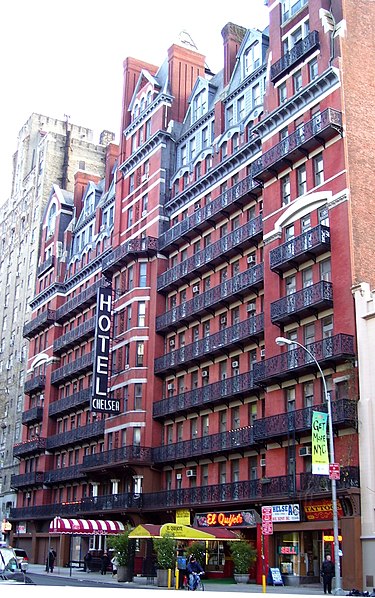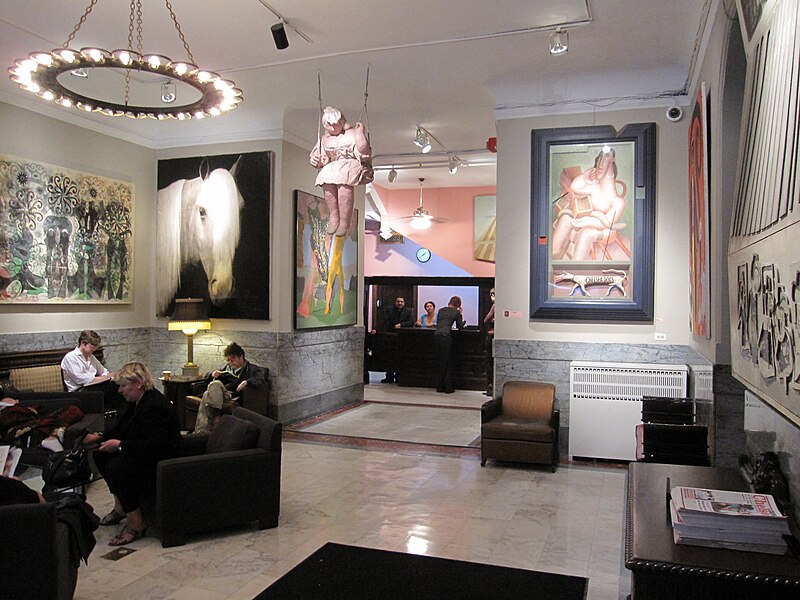The release date for Bill Hope: His Story was May 17, so those who have already ordered it from Amazon should be receiving it shortly, and anyone who wishes to order it can do so and have it promptly shipped.

For six LibraryThing prepublication reviews of Bill Hope:
His Story by viennamax, stephvin, Cricket2014, Shoosty, terry19802, and graham072442, go here and scroll down.
______________________________________________________________________
New York City, with its great diversity, has every kind of
occupation, some unusual, some unique, and a few just flat-out weird. This post and the next will have a look at
some of them.
Structural
engineer. Suppose you’re buying an
old house or a brownstone. How do you
know if it’s architecturally sound?
Before closing the deal you hire a structural engineer to look it
over. A walk-through inspection costs
$400 to $800, but if it saves you from acquiring a nightmare, it’s worth it.
 |
| Maybe they needed a structural engineer.서울특별시 소방재난본부 |
Environmental
consultant. Environmental
regulations can be a baffling maze of requirements, and New York is fiercely
regulated. In old buildings, asbestos
may have been used in construction, and lead in paint; both are toxic. Waste must be disposed of properly; your
building may be in a flood zone; your planned renovation may have undesirable
consequences; and so on. If, as a
property owner or business, you aren’t sure if you’re complying and you fear a
fine, you hire an environmental consultant to make sure you’re in
compliance.
Sidewalk vendor. They’re all over the place, selling food,
accessories, souvenirs, art, and books.
But Kirk Davidson, who sells books on the west side of Broadway near 73rd
Street on the Upper West Side of Manhattan, is a special kind of vendor, for he
has been there for years, a neighborhood fixture, and leaves his stock out overnight
under plastic. He began with a flimsy
folding table and a few items in 1986, but now offers a host of books stacked
high on ten or more tables. Some
neighbors approve, others say his tables are an eyesore and block a congested
sidewalk. Over the years he has been
served with summonses and suffered seizures of his stock, but has usually won
dismissals by pointing out errors in the summonses and citing laws on free
speech. But that’s not the end of it,
for he then sues the city for unlawful enforcement and seizure, and claims to
have netted settlements totaling $80,000.
Recently the city assigned two police officers on rotating shifts to make
sure his tables were not left unattended, which violates the law – an
assignment, Mr. Davidson emphasizes, that costs taxpayers unconscionable
sums. No question, he’s a real New
Yorker, full of chutzpah and hustle, but now he’s decided to limit himself to
four tables, “just enough to pay my bills and live on.”
 |
| Hennem08 |
Hotel archivist. A hotel with its very own archivist? Weird.
But not if the hotel in question is the Waldorf Astoria on Park Avenue
between East 49th and 50th Streets in Manhattan, a luxury
hotel famous for its two-tiered ballroom, its celebrity residents, and a vast
lobby that I used to visit briefly, to hear harp music drifting gently down
from a harpist on a balcony above. The
archivist, Granada-born Deirdre Dinnigan, sits in a cramped room in a
windowless corner of the hotel’s second-floor administrative offices,
cataloguing and researching more than 4,000 objects that include filigreed
brass room numbers, menus, letters, staff uniforms and linens, fine china,
ashtrays, silverware, and yellowing ads from the 1950s – a job she loves. But a Chinese insurance company bought the
hotel in 2014 and plans to convert it into luxury condominiums with a much
smaller hotel component. While the hotel
will include the archive, Ms. Dinnigan is worried about keeping her job. Meanwhile she’s working diligently to
catalogue materials and also to record the oral histories of longtime
employees. But in March the hotel shut
down for its two-year renovation, forcing guests to leave, some of them in
tears.
Wigmaker. He has 600 pounds of hair – gray, brown, and
blond – in his Staten Island garage, where the hairs sit in bundles and,
uncoiled, are three feet long and almost reach the ground. He is Nicholas Piazza, the grandson of
Sicilian immigrants, who for decades made custom wigs and hairpieces for such luminaries
as Jacqueline Kennedy Onassis, socialite and philanthropist Brooke Astor, and singer
Lena Horne. He is one of the few
remaining Old World wigmakers, trained mostly by Jewish and Italian immigrants
in the centuries-old trade of making wigs by hand, an intricate process
producing hairlines that blend into the skin.
But wig-making today is not a dying industry, since celebrities have
made it an “in” thing, very cool, and wigs are also in demand for Metropolitan
operas and Broadway musicals. Yet the
master wigmakers of old are fading away, replaced by imports from China, where the
painstaking work is done by thousands of factory workers. And since hairlines are really a challenge,
lots of today’s wigs feature bangs.
Genuine human hair has become hard to obtain, but at age 68, working
part-time in a Midtown salon, Mr. Piazza has enough to last him out. And the cost of his wigs? $3,850 and up.
Channel master. In this age of air travel it’s easy to
forget that ocean liners and cargo ships come and go in the port of New
York. But the Outer Harbor – the waters
beyond the Narrows but this side of Sandy Hook – is a maze of shallow channels
between shifting sandbars, and to negotiate those channels requires the
knowledge and skill of members of the Sandy Hook Pilots Association. (A brief geographical note: The Narrows is
where the entrance to the harbor is the narrowest, between Brooklyn and Staten
Island. Sandy Hook is a long, thin
finger of land that sticks out from New Jersey to enclose the Outer Harbor,
beyond which lies the open sea.) It is
the job of these 75 pilots (4 of them women) to go out in small boats to board
incoming and outgoing vessels and guide them through these channels. Their job is more essential than ever today,
since the oil tanker Exxon Valdez ran
aground in Alaska in 1989 and spilled millions of gallons of heavy black crude;
such an accident in the waters around New York would be disastrous for the U.S.
economy. But today the pilots are
maritime college graduates, and after a five-year apprenticeship they take a
four-day state exam that requires them
to know every rock, reef, shoal, pipeline, and cable in the harbor. Calm waters make their job easier; bad weather
with high winds is another matter.
 |
| A pilot boat in the Inner Harbor, 2007. |
Crematory
manager. The walls are lined with
niches containing the ashes of deceased New Yorkers, some of the remains in old
cinerary urns displayed in glass-encased time capsules with displays of
photographs and keepsakes. The interior of
the building has marble floors and walls, stained-glass windows, Oriental rugs,
and antique furniture. But towering
above the neo-Classical building is a smokestack to convey heavenward – or at
least skyward – the fumes from incineration, for this is the Fresh Pond
Crematory in Middle Village, Queens, presided over by J.P. Di Troia, president,
and his wife, the vice president. Mr. Di
Troia insists that cremation is an efficient and graceful alternative to
burial, and his four high-temperature retorts have performed 270,000 cremations
since Fresh Pond opened in the mid-1880s.
His uncle ran the place when Mr. Di Troia was a child, and he began
working there at age 17 and subsequently worked his way up to vice president,
and then to president when his uncle died.
He considers himself the keeper of 40,000 souls (Ring Lardner among
them), and when he leaves each night, he says good-bye to them. Adorned with mementos of the departed, the
niches, he insists, are a celebration of lives.
 |
A modern crematory oven.
You think crematory manager is a rather strange occupation,
even weird? Wait till you see what’s in
next week’s post.
Source note:
For much of the information in this post, I am indebted to articles in
various editions of the New York Times:
Corey Kilgannon, “A Sidewalk
Vendor Amasses Books, Lawsuits and Nearly 200 Summonses” (August 11, 2016).
Julie Satow, “Meet the Keeper
of the Waldorf Astoria’s Salad Days” (July 24, 2016).
Annie Correal, “Last of the
Master Wigmakers” (April 9, 2017).
Emily S. Rueb, “Channel
Masters in a Crowded Harbor” (November 20, 2016).
Corey Kilgannon, “Keeper of
40,000 Souls” (September 11, 2016).
* * * * *
BROWDERBOOKS: No Place for Normal: New York / Stories from the Most Exciting City in the World, my selection of posts from this blog, has received these awards: the Tenth Annual National Indie Excellence Award for Regional Non-Fiction; first place in the Travel category of the 2015-2016 Reader Views Literary Awards; and Honorable Mention in the Culture category of the Eric Hoffer Book Awards for 2016. For the Reader Views review by Sheri Hoyte, go here. As always, the book is available from Amazon and Barnes & Noble.
 |
The Pleasuring of Men (Gival Press, 2011), the first novel in the Metropolis series, tells the story of a young male prostitute in the late 1860s in New York who falls in love with his most difficult client It is likewise available from Amazon and Barnes & Noble.

Coming soon: The Sultan of
Smut, an $800 million collection (and it isn’t smut), Bang Bang and Megan
Massacre, deaths from mania in the 1840s, and cracking open a chest (the human
kind) with clippers: more where-but-in-New-York occupations.
© 2017
Clifford Browder




